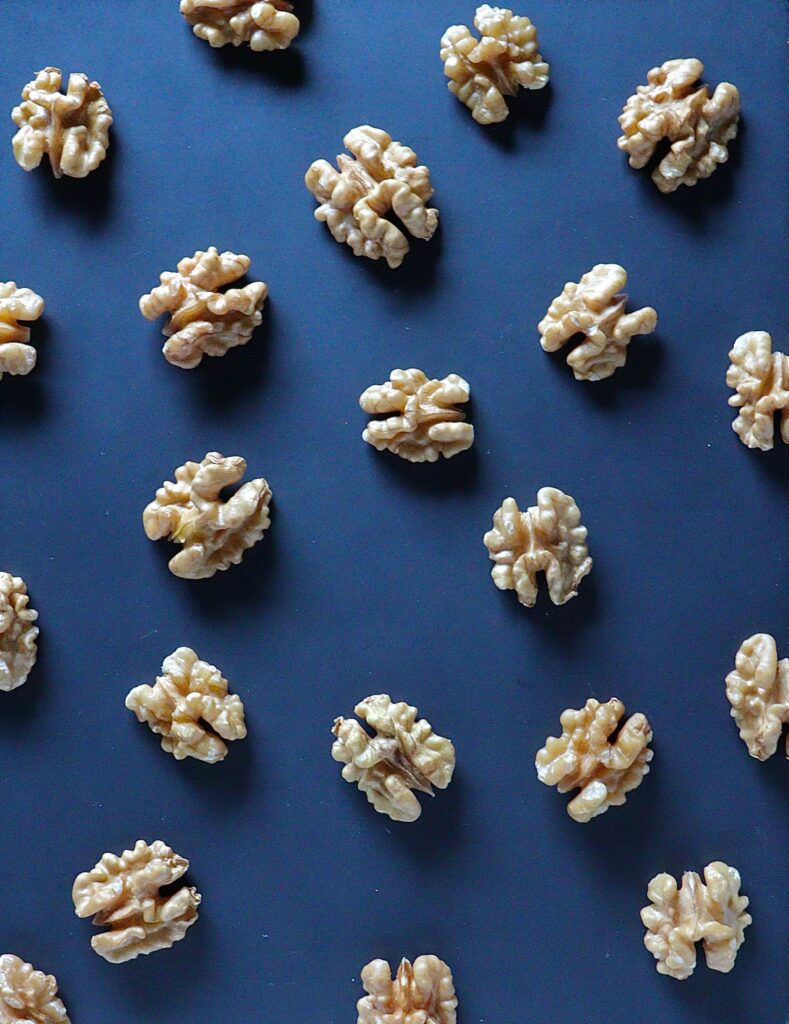
Imagine an invisible thread that binds people, a delicate but profound tether that cultivates trust, fosters empathy, and promotes social interaction. This thread, in the complex tapestry of human experience, is oxytocin. It’s not a tangible thread, of course, but a hormone produced in our brains that has earned itself a poetic nickname: the “love hormone.”
You’ve likely heard of oxytocin in passing, perhaps in a science class or a magazine article. Yet, it isn’t just a concept confined to textbooks or scientific journals. It’s an integral part of your daily life, shaping your social interactions and emotional responses.
Oxytocin is a hormone and neurotransmitter produced in the hypothalamus, a region nestled deep within your brain. The hypothalamus is often compared to a control center, directing various physiological functions.
“Oxytocin is a hormone found naturally in the body and is secreted during social cues and bonding, reinforcing social behavior,” says Associate Professor Michael Winterdahl of the Department of Clinical Medicine, Aarhus University.
The Functions of Oxytocin
Oxytocin is the quintessential multitasker. It plays a central role in a variety of functions, ranging from labor and breastfeeding to bonding and behavior.
Oxytocin and Labor
For many, the first encounter with oxytocin comes during childbirth. As a woman goes into labor, her body ramps up oxytocin production. This hormone prompts the uterus to contract, kickstarting the process that will bring a new life into the world.
Oxytocin and Lactation
But oxytocin’s role doesn’t stop at birth. After the baby arrives, oxytocin assists in lactation. It nudges milk-producing cells in the breasts, encouraging them to release their nourishing cargo. The simple act of a baby suckling can spur this cascade of events, illustrating the beautiful feedback loop between mother and child.
Oxytocin and Bonding
Beyond the maternity ward, oxytocin plays a pivotal role in our social lives. It’s earned the nickname “the love hormone” for good reason. Oxytocin helps forge the bond between mother and child, between romantic partners, and even among friends. It’s the invisible thread weaving the fabric of human relationships.
“Oxytocin has been linked to optimal maternal behavior in humans and many captive animal species,” says Dr. Kelly Robinson of the University of St. Andrews in the UK.
In fact, some scientists often refer to oxytocin as the “hormone of attachment” for this very reason. A 2019 systematic review of 17 previously published studies found that “increased maternal oxytocin levels were significantly related to more affectionate contact behaviors in mothers following mother-infant contact, synchrony, and engagement.”
However, oxytocin always flows in two directions whenever there’s a social connection. When oxytocin flows through the mother or father, it usually means that the infant is also affected by this bonding hormone.
“Oxytocin levels significantly increased in infants, mothers, and fathers during skin-to-skin contact, and parents with higher oxytocin levels exhibited more synchrony and responsiveness in their infant interactions,” wrote the researchers led by Naomi Scatliffe from the School of Nursing at the University of Connecticut.
The “Love Hormone” Moniker

Oxytocin’s reputation as the “love hormone” is well-earned. Picture this: you’re sharing a warm embrace with a loved one, a moment of connection and intimacy. At that moment, your brain is releasing oxytocin, strengthening the bond between you and the other person.
Together with other “happy chemicals” like dopamine, serotonin, and endorphins, they are like the glue that binds the pages of your life’s relationships together, a subtle yet powerful force that deepens emotional ties.
In essence, oxytocin helps us love and connect with one another, hence the “love hormone” moniker. By now, many people have heard about this nickname to the point it’s become cliché, but it’s still an apt label nevertheless.
However, oxytocin is not exactly a “love potion”. In 2019, researchers led by Lei Xu, a psychologist at the Clinical Hospital of Chengdu in China, recruited 160 straight volunteers. Half of the participants were given a nasal spray containing oxytocin, while the other half received a saline solution serving as a placebo.
After their oxytocin or placebo exposure, each participant was presented with a series of portrait photographs depicting members of the opposite sex. Each of these photos was paired with a fictitious description of the depicted person’s history of cheating. The person in the portrait may have been someone who had committed sexual or emotional infidelity or may have been ‘clean’ with no record of cheating.
The researchers found that oxytocin-boosted men expressed a stronger desire to date women who had previously been unfaithful compared to men who received the placebo. Meanwhile, oxytocin increased women’s interest in long-term relationships with faithful men.
These findings suggest that oxytocin doesn’t make men and women more prone to fall in love. Instead, what it seems to do is amplify pre-existing differences in sexual strategies between the two genders.
“Thus, oxytocin release during courtship may first act to amplify sex-dependent priorities in attraction and mate choice before subsequently promoting romantic bonds with preferred individuals,” Xu and colleagues concluded.
Ladies, don’t think less of your man though. These findings were reported for straight, single participants. In a 2013 study, researchers at the University of Bonn in Germany scanned the brains of 40 young men, all of whom were in a relationship for at least six months and reported being passionately in love.
The men were given a dose of oxytocin and were then presented with a picture of their partner or an attractive stranger. When the picture of their loved one was shown, regions of their brains associated with pleasure and desire lit up — but not when they looked at the attractive female stranger. These intriguing findings point toward’s oxytocin crucial role in fostering monogamy in humans.
“Once men receive oxytocin, the attractiveness of the partner increases compared to the attractiveness value recorded for other females,” said lead author Dr. Rene Hurlemann, professor of psychiatry at the University of Bonn.
Oxytocin and the Brain

In the labyrinth of the brain, oxytocin finds its way into the heart of emotional processing. It subtly influences our brain’s limbic system, the emotional epicenter, nudging us towards trust, empathy, and bonding.
Oxytocin’s journey begins in the hypothalamus, a small but mighty region of the brain. Here, specialized neurons — called oxytocinergic neurons — work hard to produce the hormone. Once made, oxytocin gets packaged into little bundles and is transported down long, thread-like extensions of these neurons, known as axons. The journey ends at the posterior pituitary gland, which sits at the base of the brain.
The pituitary gland acts as the body’s hormone distribution center. When it receives a signal — say, from a baby suckling or a person experiencing a warm hug — it releases oxytocin into the bloodstream.
But oxytocin isn’t just a hormone; it’s also a neurotransmitter. Some of the oxytocin produced in the hypothalamus is released directly into the brain. This allows it to communicate with other brain regions, influencing emotions and behaviors.
Think of oxytocin as a key and your body as a building with many different locks. These “locks” are receptors — specifically, oxytocin receptors — scattered throughout your body and brain. When oxytocin binds to these receptors, it unlocks various physiological responses.
In the uterus, oxytocin binding triggers muscle contractions, facilitating childbirth. In the mammary glands, it stimulates the release of milk for breastfeeding. In the brain, oxytocin can promote feelings of relaxation, bonding, and love. It can also mitigate stress responses and enhance social recognition, depending on where the receptors are located.
By interacting with different body tissues and brain regions, oxytocin plays a pivotal role in a wide array of functions. This dynamic hormone’s capacity to influence both physical and emotional health truly illustrates the interconnectedness of the body and mind.
The Tale of Two Oxytocins: Natural and Synthetic
Just as we’ve harnessed the power of many natural substances, we’ve found ways to create synthetic oxytocin. Known as Pitocin, this man-made version mimics the natural hormone’s actions. But what’s the difference between oxytocin and synthetic oxytocin?
Synthetic Oxytocin vs. Natural Oxytocin
At a molecular level, synthetic oxytocin is identical to the oxytocin your body produces. The main difference lies in how it’s used because it is administered intravenously rather than into the brain.
Synthetic oxytocin has been somewhat of a game-changer in obstetric care. While your body generates oxytocin as needed, synthetic oxytocin is administered to induce or speed up labor or to prevent excessive bleeding after childbirth. Synthetic oxytocin can also be used postpartum to reduce the risk of hemorrhage, a potentially life-saving intervention.
However, there are many drawbacks to Pitocin, which is why it is only used when the physical health of the mother or their baby depends on it.
Some of the main differences between pitocin and oxytocin, as well as their respective effects on the body, include:
- Pitocin and oxytocin have different effects on the body during labor and delivery.
- Pitocin is given through an IV and regulated by a pump, while oxytocin is naturally produced by the body.
- Pitocin can cause longer and stronger contractions, potentially leading to complications for the baby.
- Pitocin does not stimulate the release of endorphins, which help counteract the pain of childbirth.
- Pitocin works slower and less effectively than natural oxytocin in cervical dilation.
- Pitocin can increase the risk of labor complications and cesarean delivery.
- Pitocin interferes with the natural release of oxytocin, which affects post-birth bonding with the baby.
- Pitocin delays the natural production of oxytocin, potentially leading to delayed breast milk production and breastfeeding issues.
- Skin-to-skin contact, lovemaking, and breastfeeding can increase the release of natural oxytocin to address these issues.
What happens when oxytocin levels are too high or too low?

Like any hormone, oxytocin works best when it’s balanced. But what happens when oxytocin is too high or too low?
High Oxytocin Levels
Researchers from Concordia University in Canada found that healthy adults who received an extremely high dose of oxytocin became overly sensitive to the emotions of others. Imagine a volume knob turned up too high, causing the music to distort and become overwhelming.
Research suggests that excessively high levels of oxytocin might be linked to certain health issues like water retention and hyponatremia — a condition where the body’s sodium levels are dangerously low. In some cases, it might also contribute to the onset of social anxiety or issues with social interactions.
“A constantly elevated level of oxytocin may mean that it is not secreted in the same dynamic way as under normal conditions. It is precisely these dynamics that are important to our emotional lives. This may explain why feelings such as closeness, attachment, and love appear to be altered in some women who use birth control pills” Winterdahl explains.
Low Oxytocin Levels
On the flip side, low levels of oxytocin can be likened to a muted melody. It can result in difficulties with social interaction, empathy, and forming healthy emotional bonds. Some studies also suggest a potential link with mental health disorders like depression and anxiety, but also autism spectrum disorder, though more research is needed to fully understand these connections.
Also, a lack of oxytocin in a nursing mother would prevent the milk-ejection reflex and prevent breastfeeding.
Oxytocin: Men vs. Women
Does oxytocin play the same tune in men and women? While oxytocin affects both genders in very similar ways, research suggests there are situations in which effects might be experienced differently. This is likely owed to interactions between oxytocin and other hormones — like estrogen in women and testosterone in men.
Oxytocin in Women
In women, oxytocin has a starring role in childbirth and breastfeeding. Its surges during labor help the uterus contract, and it stimulates the milk let-down reflex during nursing.
But oxytocin’s influence extends beyond these maternal functions. Research suggests that oxytocin may enhance emotional empathy and social bonding more in women, particularly during certain phases of the menstrual cycle when estrogen levels are high. This might explain why women often demonstrate high levels of empathy and relational bonding.
Oxytocin in Men
In men, oxytocin’s role might be less visible but is no less essential. Men also experience surges of oxytocin during positive social interactions, fostering feelings of trust and bonding. Overall, the way men and women experience oxytocin is very similar, although women tend to have higher oxytocin levels.
Interestingly, some studies suggest that oxytocin might play a more significant role in the regulation of stress responses in men. It appears that when oxytocin interacts with cortisol, the stress hormone, this can bring testosterone levels down.
The sex-specific effect of oxytocin on social interactions
In 2013, researchers at the University of Haifa in Israel recruited 62 men and women aged 20 to 37 years, half of whom received an intranasal dose of oxytocin while the other half received a placebo. Following the treatment, the participants watched various videos showing different types of social interactions.
The results showed that oxytocin improved the ability of all the participants to better interpret social interactions in general. However, the researchers also noticed some significant differences.
Following the boost of oxytocin, men were better at correctly interpreting competitive relationships, whereas women were more likely to correctly identify kinship. Just like in the mate preference study from China showcased earlier, oxytocin is amplifying pre-existing biases in how men and women interpret social interactions.
“Our results coincide with the theory that claims the social-behavioral differences between men and women are caused by a combination of cultural as well as biological factors that are mainly hormonal,” concluded Prof. Simone Shamay-Tsoory, who led the study.
Natural Ways to Boost Oxytocin

In our quest for well-being, we often overlook the power of simple, natural strategies. In the case of oxytocin, a host of everyday activities can potentially give this hormone a welcome boost. Let’s explore some of these strategies in more detail.
Embrace the Power of Touch
Oxytocin is often released in response to physical touch. This doesn’t have to be intimate — any form of warm, positive physical contact can do the trick.
- Hugs and cuddles. The simple act of hugging someone can trigger a surge in oxytocin. So, don’t hesitate to share a cuddle with your loved ones. It’s a win-win: you’ll not only brighten their day but also give your oxytocin levels a lift.
- Massage. Research shows that receiving a massage can boost oxytocin levels. This might explain why massages can feel so relaxing and rejuvenating.
- Pet therapy. Pets aren’t just adorable companions; they can also be great oxytocin boosters. Petting a dog or a cat can spur oxytocin release, fostering a sense of calm and well-being.
Foster Connections
Oxytocin is deeply entwined with our social lives. Engaging in positive social interactions can stimulate oxytocin release, reinforcing the bonds we share with others.
- Spend quality time with loved ones. Whether it’s a meal with family, a coffee catch-up with friends, or a romantic date, quality time with loved ones can bolster your oxytocin levels.
- Express kindness and gratitude. Performing acts of kindness or expressing gratitude can also stimulate oxytocin. Consider volunteering, helping a friend, or simply saying thank you more often.
Engage Your Senses
Certain sensory experiences can trigger oxytocin release. This includes listening to music, enjoying a meal, or even basking in the sun.
- Savor a meal. Sharing a meal isn’t just about satisfying your hunger; it can also be an oxytocin-boosting activity. The act of eating, especially when combined with social interaction, can stimulate oxytocin release.
- Listen to music. Music has the power to stir emotions, and it can also spur oxytocin release. Research suggests that listening to music, especially with others, can boost oxytocin levels.
- Soak up the sun. Sunlight can trigger the release of several hormones, including oxytocin. So, taking a walk outside on a sunny day can potentially give your oxytocin a boost.
Practice Mindfulness and Relaxation
Mindfulness and relaxation techniques, such as meditation and yoga, can also stimulate oxytocin release. These practices foster a sense of calm and well-being, which can, in turn, spur oxytocin production.
The key to boosting oxytocin naturally lies in nurturing your connections — with others, with your senses, and last but not least with yourself. By embracing these simple strategies, you can potentially enhance your oxytocin levels, fostering a sense of connection, trust, and well-being.
Can Supplements Boost Oxytocin?
While the idea of taking an oxytocin supplement might seem like an easy shortcut to boost your “love hormone” levels, the science is still out on this one.
While some small studies suggest potential benefits, more robust research is needed. Before considering supplements, it’s always best to consult with a healthcare provider to weigh the benefits and potential risks.
Wrapping Up
Oxytocin, the love hormone, is a potent example of how our bodies and minds are intricately intertwined. It underscores the profound effects of hormones on our behaviors, emotions, and physical health.
“Humans are super social beings, we are able to put ourselves in the place of others, show empathy, fear loneliness and seek community – all driven by the brain’s secretion of oxytocin. Even very small changes in brain oxytocin levels will affect the way we process emotions and thus how we interact with each other,” says Winterdahl.
FAQ about Oxytocin
Oxytocin is a hormone and neurotransmitter produced primarily in the hypothalamus and released by the pituitary gland. It plays an essential role in a range of physical and emotional processes, including childbirth, breastfeeding, social bonding, stress response, and feelings of love and trust.
Oxytocin is often referred to as the “love hormone” because it’s released during activities that foster bonding and intimacy, such as hugging, touching, and sexual activity. It’s also involved in maternal bonding and is released in large quantities during childbirth and breastfeeding.
Oxytocin is produced by specialized neurons in the hypothalamus. Once made, it’s transported to the pituitary gland at the base of the brain. In response to specific signals, such as a baby suckling or a warm hug, the pituitary gland releases oxytocin into the bloodstream. Some oxytocin is also released directly into the brain, where it acts as a neurotransmitter.
At a molecular level, synthetic oxytocin is identical to the oxytocin your body produces. The primary difference is in how it’s used. While your body generates oxytocin as needed, synthetic oxytocin is administered externally, often to induce or speed up labor or to prevent excessive bleeding after childbirth.
Research suggests that while both men and women produce oxytocin, its effects might be influenced by other hormones, like estrogen and testosterone. For instance, oxytocin might enhance social bonding more in women, especially during certain phases of their menstrual cycle. In men, oxytocin might play a more significant role in the regulation of stress responses.
Several activities can potentially boost your oxytocin levels naturally. These include physical touch (like hugging or petting a pet), positive social interactions, sensory experiences (like enjoying a meal or listening to music), and mindfulness practices like meditation or yoga.
Oxytocin stimulates uterine contractions during labor and facilitates the release of breast milk during breastfeeding. It helps in the progression of labor and promotes the mother-infant bond.
There is ongoing research into the potential therapeutic use of oxytocin for various psychiatric conditions such as autism spectrum disorder, social anxiety disorder, and post-traumatic stress disorder (PTSD). However, further studies are needed to determine its efficacy and safety.
Oxytocin is essential for the let-down reflex, which triggers the release of breast milk. It helps the smooth muscle cells surrounding the milk ducts to contract, allowing milk to flow and facilitating breastfeeding.











